Learn essential tips for maintaining your fire pit, including cleaning, safety precautions, and seasonal care to keep it in top condition.
Why Fire Pit Maintenance Matters: Ensuring Longevity and Safety
Fire pits are a fantastic addition to any backyard, offering warmth, ambiance, and a focal point for outdoor gatherings. However, to keep your fire pit in top condition and ensure it remains safe to use, regular maintenance is essential. Proper care not only extends the life of your fire pit but also prevents potential hazards, making your outdoor experiences enjoyable and worry-free.
Basic Maintenance Tips: Keeping Your Fire Pit Clean
Our Walden experts agree that regular cleaning is a crucial aspect of fire pit maintenance. Whether you have a wood-burning or gas fire pit, keeping it clean helps to prevent buildup that could lead to damage or unsafe conditions.
- Remove Debris: Regularly clear out ash, soot, and debris from your fire pit. For wood-burning fire pits, this means removing ashes after each use. For gas fire pits, ensure the burner and ignition components are free from obstructions.
- Wipe Down Surfaces: Use a damp cloth to wipe down the surfaces of your fire pit. This helps remove any soot or grime that can accumulate over time.
- Inspect for Damage: Regularly check for any signs of wear and tear, such as cracks, rust, or loose components. Addressing these issues promptly can prevent them from becoming major problems.
Seasonal Care for Fire Pits: Adapting to Weather Changes
Different seasons bring different challenges for fire pit maintenance. Adapting your care routine to the changing weather ensures your fire pit stays in great condition year-round.
Spring and Summer Maintenance: Preparing for Use
As the weather warms up, it's time to get your fire pit ready for frequent use.
- Deep Cleaning: Start the season with a thorough cleaning. For wood-burning fire pits, remove any leftover ashes and clean the bowl or pit area. For gas fire pits, clean the burner and ignition components.
- Check for Rust: Inspect your outdoor fire pit for any signs of rust or corrosion, especially on metal fire pits. Use a wire brush to remove rust and apply a high-temperature paint if necessary.
- Test Gas Lines: If you have a gas fire pit, test the gas lines and connections for any leaks. A simple soap and water solution can help identify leaks—bubbles will form at the site of any leaks.
- Cover When Not in Use: Protect your fire pit from the elements by covering it when it's not in use. This prevents rainwater from collecting and causing rust or other damage.
Fall and Winter Maintenance: Protecting Your Fire Pit
As temperatures drop, taking extra precautions can help protect your outdoor fire pit from harsh weather conditions.
- Remove Residual Ash: Clear out any remaining ash or debris from your fire pit to prevent moisture absorption, which can lead to rust and deterioration. If you’re using our Legacy Series™ Fire Pit Insert Set, simply replace your disposable ash tray basin located under the foldable steel grate.
- Cover Properly: Use a durable, weather-resistant cover to protect your fire pit from snow, rain, and ice. Ensure the cover fits snugly to keep out moisture.
- Store Accessories: Store any removable components, such as grates or spark screens, in a dry location to prevent rust and damage.
- Use Fire Pit Regularly: Using your fire pit periodically during winter can help keep it dry and prevent moisture buildup.
Safety Precautions: Using Your Fire Pit Responsibly
Safety should always be a priority when using your fire pit. Following these precautions can help prevent accidents and ensure a safe, enjoyable experience.
- Location: Place your fire pit on a stable, non-flammable surface, away from any structures, overhanging branches, or flammable materials.
- Supervision: Never leave a fire pit unattended, especially when it is in use. Ensure children and pets are kept at a safe distance.
- Fire Extinguishing Tools: Keep a fire pit snuffer, fire extinguisher, water hose, or sand nearby to quickly extinguish any unintended flames.
- Fuel Usage: Use only approved fuels for your fire pit. Avoid using lighter fluid, gasoline, or other accelerants that can cause dangerous flare-ups.
- Proper Ventilation: Ensure proper ventilation to prevent the buildup of harmful gases, especially for gas fire pits.
Cleaning Techniques: How to Properly Clean Your Fire Pit
Proper cleaning techniques vary depending on the type of fire pit you have. Here's a guide for both wood-burning and gas fire pits.
Cleaning Wood-Burning Fire Pits
- Cool Down: Allow the fire pit to cool completely before starting the cleaning process.
- Remove Ashes: Use a metal ash scoop to clean out the ashes and dispose of them in a metal container.
- Scrub the Bowl: Use a wire brush to scrub the inside of the fire pit bowl, removing any stuck-on debris or soot.
- Wash with Soapy Water: Mix mild soap with water and scrub the inside and outside of the fire pit with a sponge. Rinse thoroughly with water and dry completely to prevent rust.
Cleaning Gas Fire Pits
- Turn Off Gas: Ensure the gas supply is turned off before starting any cleaning.
- Remove Lava Rocks or Glass: Take out any lava rocks or fire glass and clean them separately with soapy water. Rinse and let them dry completely.
- Clean Burner and Ignition Components: Use a soft brush to clean the burner ports and ignition components. Be gentle to avoid damaging these parts.
- Wipe Down Surfaces: Wipe the entire fire pit with a damp cloth to remove any dirt or debris. Dry thoroughly to prevent rust.
Preventing Damage: Tips to Extend the Life of Your Fire Pit
Taking steps to prevent damage can significantly extend the life of your fire pit, ensuring you can enjoy it for many years to come.
- Use a Protective Cover: Always use a protective cover when the fire pit is not in use to shield it from the elements.
- Avoid Using Harsh Chemicals: Stick to mild soap and water for cleaning to avoid damaging the finish of your fire pit.
- Conduct Regular Inspections: Conduct regular inspections to catch any signs of wear and tear early. Addressing minor issues promptly can prevent them from becoming major problems.
- Use Proper Storage: If possible, store your fire pit in a covered area during extreme weather conditions to protect it from the elements.
FAQs
How often should I clean my fire pit?
You should clean your fire pit after every few uses to prevent buildup of ash, soot, and debris. A thorough cleaning at the start and end of each season is also recommended.
What is the best way to protect my fire pit from the elements?
Using a durable, weather-resistant cover is the best way to protect your fire pit from the elements. For best results, use a solid snuffer lid which serves double-duty in safely snuffing out the fire at the evening’s end and protecting the fire pit from the elements. Ensure the cover fits well to keep out moisture, which can cause rust and deterioration.
Can I use regular household cleaners on my fire pit?
It's best to avoid harsh household cleaners, as they can damage the finish of your fire pit. Stick to mild soap and water for cleaning, and use a wire brush for tougher debris.
Conclusion
Maintaining your fire pit is essential for its longevity and safe use. By following these tips for regular cleaning, seasonal care, and safety precautions, you can enjoy your fire pit for many years to come. Regular inspections and preventive measures will keep your fire pit in excellent condition, providing a warm and inviting space for outdoor gatherings throughout the year.
Luxury Fire Pits - Backyard Accessories - Fire Pit Grates
Walden Backyards Makes Top Rated Outdoor Fire Pits and Backyard Accessories
Legacy Fire Pit - Blow Through Stoker Poker - Fire Pit Grates - Accessories





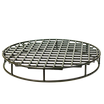
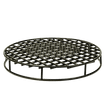
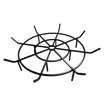

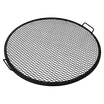

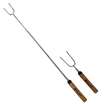

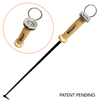
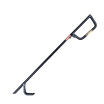
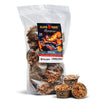
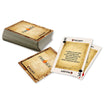

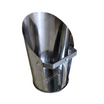
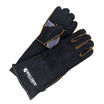
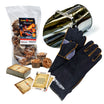
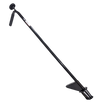
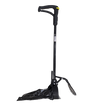
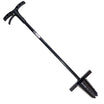









Leave a comment
All comments are moderated before being published.
This site is protected by hCaptcha and the hCaptcha Privacy Policy and Terms of Service apply.